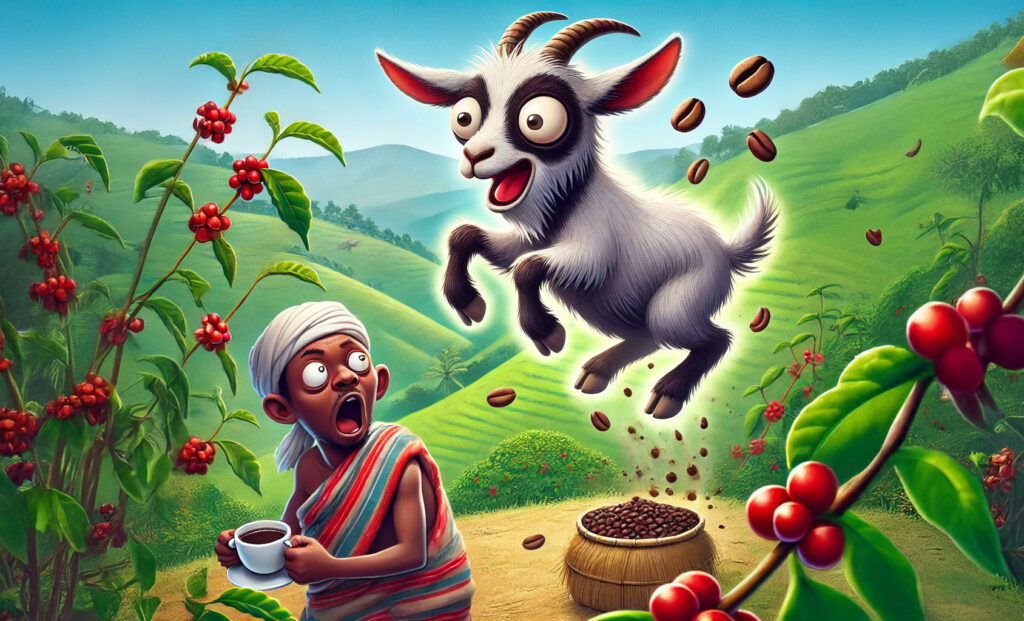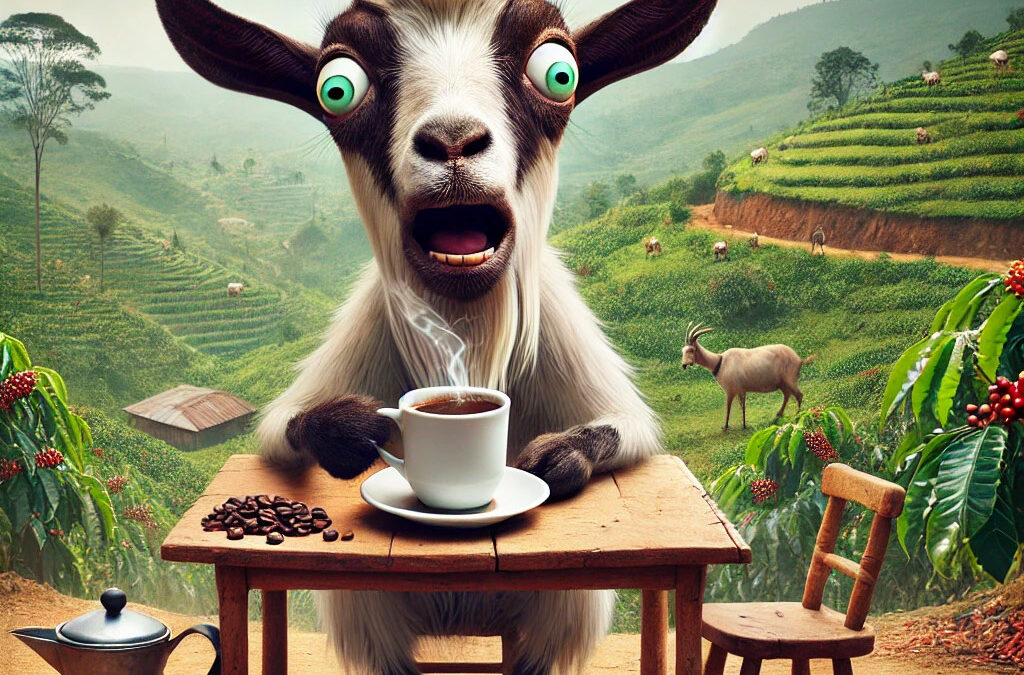In this blog, we’ll dive into how goats uncovered coffee’s stimulating properties, explore if other animals have also reacted to this magical bean, and reflect on how this unlikely beginning connects to our modern love for coffee.
The story begins centuries ago in the Ethiopian highlands, where a goat herder named Kaldi noticed something peculiar about his flock. His goats, usually calm and predictable, were suddenly energized after nibbling on bright red berries from a particular shrub. They began to prance and frolic with renewed vigor, even late into the night.
Curious, Kaldi decided to investigate. He tried the berries himself and experienced a similar burst of energy. Recognizing the potential of this newfound “wonder berry,” Kaldi shared his discovery with a local monastery. The monks were skeptical at first but soon realized the berries helped them stay awake during long hours of prayer. From there, word of coffee began to spread, eventually reaching the Middle East, Europe, and beyond.
Ethiopian region of Kaffa (from which the word “coffee” is thought to derive). This area is home to the native coffee plant, Coffea arabica, which still grows wild there today. While the precise spot where coffee was first discovered remains a mystery, the Ethiopian highlands are universally recognized as the birthplace of coffee.
Have Other Animals Experienced Coffee’s Effects?
Goats weren’t the only animals to cross paths with coffee. While the tale of Kaldi and his flock is the most famous, other wildlife species have also had encounters with coffee cherries:
- Civets and Coffee: Civets, small nocturnal mammals, are known to eat coffee cherries. Interestingly, their digestion process plays a significant role in creating the highly sought-after (and pricey) kopi luwak coffee, often referred to as “civet coffee.”
- Birds and Coffee Plants: Birds are naturally drawn to the bright red coffee cherries as a food source. However, due to their size, they tend to eat the fruit without experiencing the caffeine buzz, as most of the caffeine resides in the bean.
- Farm Animals: Like Kaldi’s goats, other grazing animals occasionally consume coffee plants when they’re left unguarded. However, unlike goats, their reactions rarely led to grand discoveries!

Fun Facts About Coffee’s Unlikely Journey
- Accidental Discovery: If Kaldi’s goats hadn’t snacked on coffee cherries, humanity might never have uncovered the energizing properties of coffee.
- Global Spread: What began with one herder and his goats transformed into a global phenomenon, with coffee cultivation now spanning continents.
- Animal Connections: Even today, animals like civets and birds play a role in the coffee ecosystem, reminding us of its wild origins.
From Goats to Greatness: The Legacy of Coffee
The next time you sip your favorite coffee, take a moment to reflect on its humble origins. What started with a curious goat herder and his frisky flock has become an essential part of modern life. This story reminds us of the power of observation and how even the smallest discoveries can have a global impact. Cheers to Kaldi, his goats, and the enduring magic of coffee!

